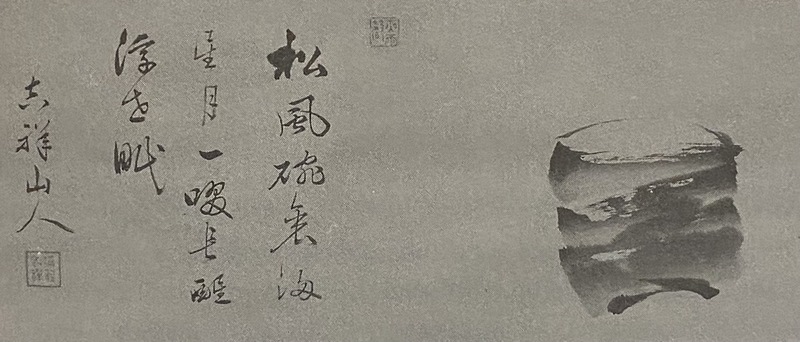Conclusion: Solidifying Tea and Zen’s Connection
“The pin breeze fills the tea bowl with moon and stars. One sip awakens you from the long dream sleep.”
This last primary source exemplifies how the connection between Zen and tea has lasted–the creator of this illustration of a tea bowl and verse is Kuga Kankei (Hohenegger). Kankei was the sixty-first head abbot of the revered Zen temple Eihei-ji and the spiritual leader of the Soto School of Buddhism during the end of the Tokugawa (Edo) Period (1603-1868) (Hohenegger). While he wasn’t a religious figure I studied immensely, as his influence was not during the feudal period in Japan, under his guidance, Zen Buddhism “entered the modern world” and with it, its connection to tea (Hohenegger).
But why is this connection important? Why is it significant to understand these monks as the preservers of the spirituality of tea?
These monks who helped spread the word of better, more mindful practices of tea in Japan, helped to bring inner peace to many who practiced. Without them, it’s very possible that Japan would not have the reputation of their famous tea ceremonies that they do today, because of the lack of tea practices in the first place. They also offer a lens into tea’s history that isn’t commodified, instead focused on the betterment of mind, body, and spirit of all people of all classes.
Besides it’s more historical context, these monks also generously shared their knowledge with others and taught people how to live more fruitful lives. The spirituality of tea is, as I stated in my introduction, a place where religion and tea conicide and inner peace can be found. I believe that this is done through the mindfulness practices that tea’s spirituality allows its practitioners to take part in. As my own experiences have taught me, it is a blessing to live in the moment without having to think of the past or the future, and these monks helped give that blessing to others through the practices of tea and Zen.
Now more than ever, with so much on everyone’s plates and constant distractions, it’s hard to sit and do nothing but one task, yet drinking tea in the way these monks did is a way to achieve such one-mindedness. Having at this point done extensive research on the connection between these Zen monks and tea, it’s obvious to me that there lies a tranquility in the art of making a simple cup of tea -- a tranquility of taking time to do and thinking of nothing else except of the tea that parallels with the Zen practice of just being. In this way, the spirituality of tea is a simple one: one that allows you to exist only in the current moment, free of the past and future.

